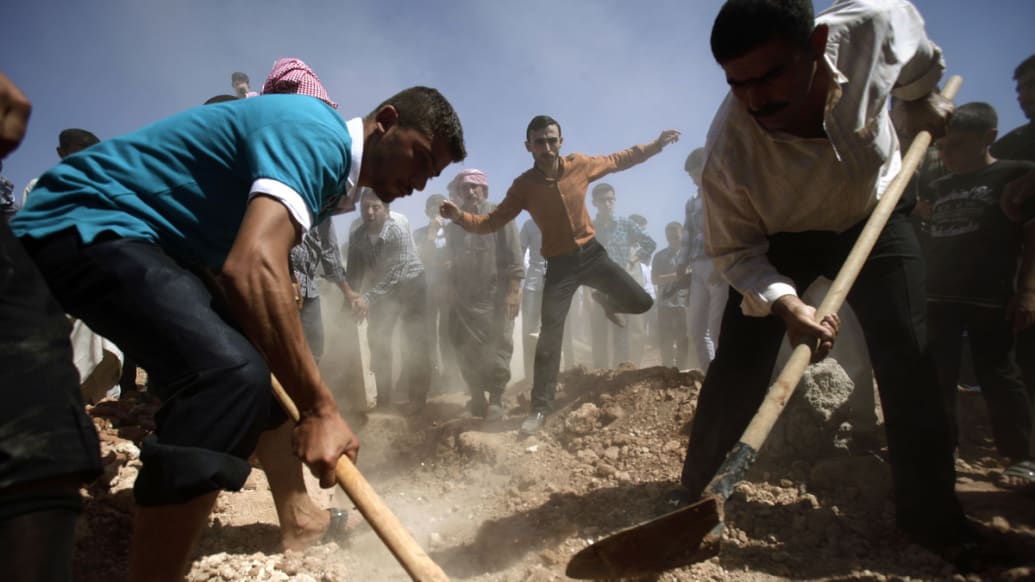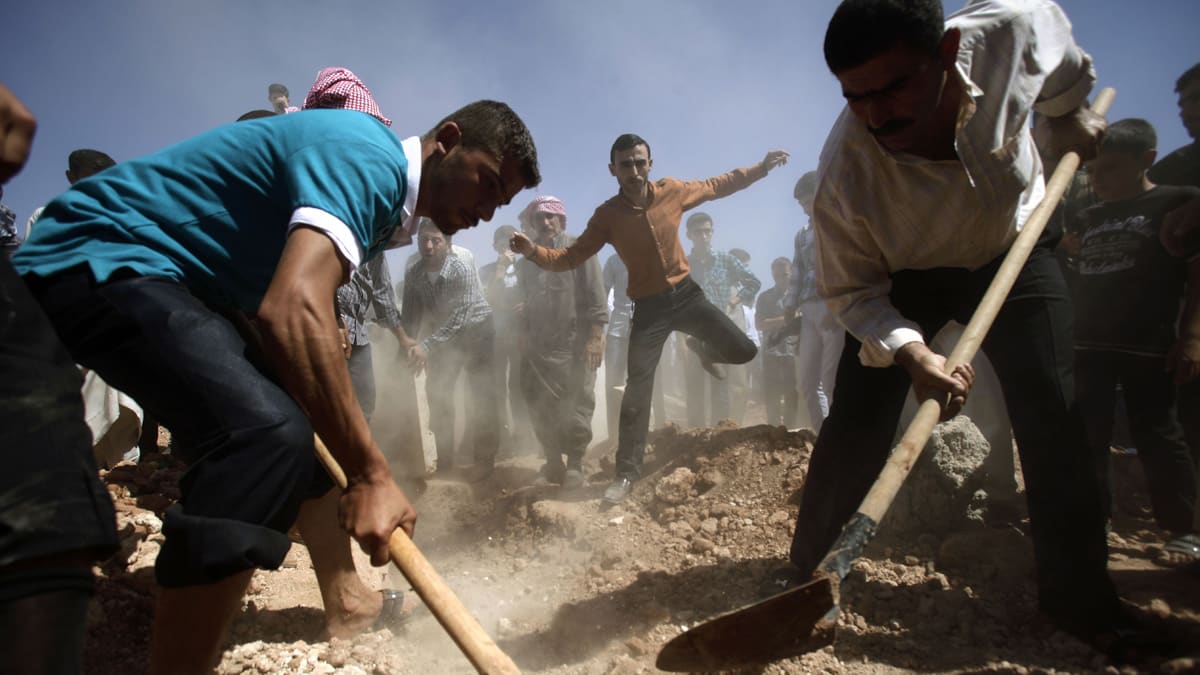Last week, roughly a dozen Syrian rebels lounged in tracksuits on a shaded garden terrace outside a house near Azaz, a town along Syria’s northern border. They were fasting for Ramadan, and hunger made the day pass slowly, but that suited their purpose. Around midnight that night, they planned to make a foot patrol to Menagh airport, a government stronghold where 270 soldiers loyal to the regime have been holed up for several weeks. The airport is the military’s largest north of Aleppo, Syria’s commercial capital, and the rebels are girding for a fight. “We don’t want to let them rest,” said the group’s de facto leader, a 36-year-old former locksmith whose nom de guerre is Abu Dujana.

In recent weeks, President Bashar al-Assad has drawn down his forces along the Turkish border to shore up government control in Damascus and Aleppo. But a fragmented geography of rebel-controlled areas remains its wake. The Free Syrian Army, the main rebel fighting force, maintains little to no ground presence in many of the areas that Assad’s army has abandoned. Collapsed sand berms, the occasional burnt-out vehicle—and in one case—a couple of plastic lawn chairs reside under an awning where government checkpoints once stood.
But in these areas, there is no need for a military presence on the ground; death comes from above. Forces loyal to the regime continue to shell the northern towns controlled by the FSA. Over the past two weeks, Assad’s forces have stepped up an air campaign, which has left hundreds dead, nearly all civilians, in the towns of Azaz, Al-Bab, Tel Rifaat and Mara. As long as the regime shells at will and wreaks havoc on the area, rebel control is only partial. And the stubborn pockets of resistance, especially the well-defended military installations planted firmly at points in the countryside, are flush with weapons and ammunition, which the rebels sorely lack.
When Assad’s army pulled out of Azaz, they were unwilling to abandon Menagh, where the rebels say the government keeps 15 tanks, 12 mortars and 30 helicopters. Many are in poor condition, but the arsenal far outstrips that of the rebels, who have just Kalashnikovs, rocket-propelled-grenades and one heavy machine gun at their disposal. The risk of the attack is high, but so too is the reward. Abu Dujana and his group of roughly 60 fighters know that if they can eventually drive the remaining soldiers out of Menagh, they will acquire new weapons and score a symbolic victory. Already, eleven of the men holed up at Menagh have defected, at great personal risk, to join the FSA. Many have provided valuable intelligence.
Even trapped inside the Menagh airport, the regime’s soldiers have found ways to harass the local population. The FSA fighters said that when supplies are low, the Syrian army will waylay passing civilians and hold them hostage until their families deliver supplies. For the most part, however, the men in Menagh have been receiving supplies from Aleppo, where the FSA controls large areas of the city, but the regime still holds its most strategic points.
Over the past few days, the rebels have watched helicopters arriving from Aleppo, the country’s largest city, delivering food to Menagh. “We try to shoot at it,” said Abu Dujana. “But it’s too high up. We need Katyusha rockets, Kubras, and SAMs,” he added, referring to surface-to-air missiles which can take out airplanes and helicopters.
Later that afternoon, as the soldiers continued to relax in the yard before breaking the fast, a helicopter suddenly whirred overhead, puncturing the silence. Heads swiveled, anxiously scanning the sky. Eventually, the soldiers just shrugged in resignation: there was nothing they could do.
